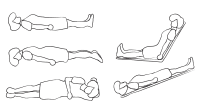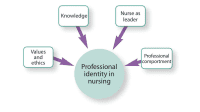Nursing’s integral role

Quality improvement (QI) seeks to standardize structures and processes in the healthcare setting to reduce variation in care and improve patient outcomes. Since 1991, the Institute of Healthcare Improvement (IHI) has provided resources and tools, but the publication of To Err is Human and Crossing the Quality Chasm, which shows that medical errors result in up to 98,000 deaths per year, highlights the vital importance of QI. In the subsequent years, several quality-focused organizations have developed additional tools, including LeapFrog, Pay for Performance measures, and accountable care organizations.
As a result of increased use of QI measures, many healthcare systems have developed nursing quality departments and hired QI staff. These roles provide support, resources, and project management skills, but all nurses—nursing assistants, bedside nurses, managers, and directors—must participate at the unit level.
An improvement opportunity may be identified via a unit-based balanced scorecard (for example, for falls, pressure injuries, infections, or staff turnover) or nurses may note that evidence-based practices (EBP) aren’t being followed. If multiple topics are identified, a QI project should prioritize those that are most likely to impact patient outcomes positively and align with the organization’s goals. Next, the unit should form a team that includes all key stakeholders, including leaders, physicians, and nurses. If available, nurses can seek guidance from a QI mentor or director of nursing research and EBP.
Consider this example: A unit experiencing an increased rate of patients falling while in the bathroom forms a QI team, which includes bedside nurses who understand gaps in the process. Following the IHI Model for Improvement, the team identifies changes that can help reduce falls. The bedside nurses know that one reason patients fall is that they’re left alone in the bathroom while nurses step outside of the room to get gloves, so they recommend a small test of change—adding gloves to the bathroom. This simple process change, which could lead to dramatic improvements, may not be evident to others.
I urge every nurse to get involved in QI at the unit or hospital level. This could be as simple as completing audits on infection prevention practices. For example, if the unit’s compliance with daily bathing falls below the hospital’s target, initiating a QI project could lead to a better understanding of why compliance is low and how to improve it. As you gain more experience, take on other roles, such as identifying small tests of change, leading education, or evaluating data.
Find a topic that interests you and get involved. As QI leader W. Edwards Deming said, “Quality is everyone’s responsibility.” Nurses—the professionals who spend the most time in direct patient care—help drive improvements that enhance patient care quality.
Staci S. Reynolds is an American Nurse Journal advisory board member, associate clinical professor at Duke University School of Nursing, and infection prevention clinical nurse specialist at Duke University Hospital in Durham, North Carolina.
References:
Institute for Healthcare Improvement. How to improve. 2022.
Institute of Medicine Committee on Quality of Health Care in America. To Err Is Human: Building a Safer Health System. Washington, DC: National Academies Press; 2000.
Institute of Medicine Committee on Quality of Health Care in America. Crossing the Quality Chasm: A New Health System for the 21st Century. Washington, DC: National Academies Press; 2001.
Picarillo AP. Introduction to quality improvement tools for the clinician. J Perinatol. 2018;38(7):929-35. doi:10.1038/s41372-018-0100-4



















4 Comments. Leave new
Thanks for such an interesting article. I share that my doctoral project was a quality improvement initiative related to fall prevention, and it was wonderful to see the involvement of the staff and the leader. In my case, the initiative was based on two evidence-based interventions, the intentional hourly round, and patient education. Also, the initiative was an Evidence-Based QI and I used as a framework a model of change and a learning theory to reach a sustainable improvement and generate a culture of change.
As mentioned in your article, quality improvements are everyone’s responsibility, so the integration of several leaders, not only nursing, helps to minimize the number of falls and create a collaboratory environment.
In following the links, I saw that IHI recommends the Plan-Do-Study-Act method. What is most important when using this method is educating those impacted about the process. If people understand that the intent is to try something, see how it works, then adopt, adjust or abandon then new change, they will be much better able to accept the frequent implementation of changes. Otherwise, it comes across very much as “ready, fire!, aim.”
Dr. Reynolds,
Thank you for introducing this topic in such an approachable manner! I am the director of an online RN-BSN program and we have integrated QI using the IHI tenets and tools throughout the curriculum. In collaboration with nurse leaders where they work, our students identify and develop a QI project (or engage in a leadership role within an ongoing project) as their capstone project. We hope this educational focus enhances awareness of this vital approach to improvement in patient care and outcomes. I plan to use your concise paper in our introductory class!
Thank you again!
Linda
Linda Perfetto PhD, RN, CNE, CNOR, FAADN
Director, RN/ADN to BSN Program
Charter Oak State College
55 Paul Manafort Dr
New Britain, CT 06053
lperfetto@charteroak.edu
Interesting topic and very relevant. It is important to consider how to prevent medication errors especially in this day in time when staff shortages are becoming common place and an increase in acuity and patient nu mbers. Hopefully this model can be applied to the aforementioned to the more critical problem of shortages in staff and maintaining safety